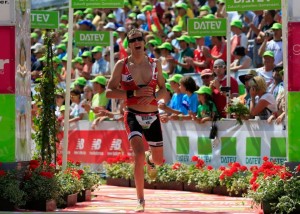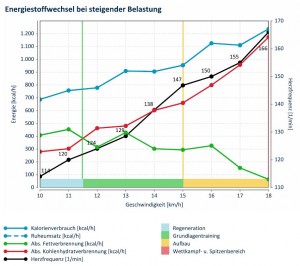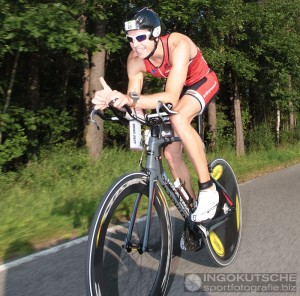 |
| Image: Matthias Grosser |
As already announced in a post two months ago, I did regular high altitude air applications before the challenge. I also promised to tell you about it. Of course I'll do that now after the race. Before that, however, a word of warning: every athlete reacts differently to mountain air, so general conclusions cannot be easily drawn. Here I am describing the effects on me as an athlete. I'm not a scientist, so my assessments are of course also subjective to a certain extent.
Below you can see the results of my spiroergometry after several applications. Thanks to Jürgen Trapp from the triathlon.de shop in Nuremberg, I sat on the mask 2-3 times a week and worked on the side, so I didn't do any active training, but used it passively. A session usually lasted an hour at a simulated altitude of approx. 4,500 meters. The oxygen saturation was between 75% and 80%, which is significantly lower than normal.
What did it do? The following is an evaluation on the treadmill.
 |
| Click to enlarge |
The green line is important, it shows the fat metabolism. With the regular use my fat burning ability improved, and that in all intensity levels. First of all, you can see on the far right that my anaerobic threshold (the point in time when only carbohydrates are burned, but no more fat) was at a maximum load of 19 km / h. Because even at 18km / h my body was still drawing 5% of its energy needs from the fat reserves. During this time, it was very difficult for me to get over the anaerobic threshold.
This also shifts the basic area. You can see that my long distance pace went up to heart rate 150 without any problems. Because until then the fat burning is absolutely stable. And the more fat your body can metabolize from its own (almost inexhaustible) fat reserves during the race, the longer you can hold out or go at a higher pace.
What did this mean for me in the race?
1. Up to pulse 150 everything was easy and nothing could actually happen to me. We both had calculated that with a normal nutrition strategy on the track I could tolerate a maximum of 10 to 10.5 hours of competition duration in this pulse range without my glycogen stores running empty.
2. In combination with an anaerobic threshold that was almost inaccessible in the race, this resulted in the possibility that I could increase the tempo or pull longer competitions without having to worry that I would break in or steer into a starvation branch.
3. Since aerobic performance and the energy balance were no longer the huge problem, a very good strength endurance was necessary. Otherwise, a higher pace cannot be achieved, otherwise I would not have been able to keep up with my muscles in the long run. (For me, this includes, first and foremost, hill runs and long training runs at competition pace)
In the final marathon, I took it to the extreme for my standards and ran what my body was capable of from kilometer 20. I always had the feeling "Shit, you're about to break in, the pace is too fast", but nothing happened and no break-in came. Until I was amazed to find out at the finish line that I had moved my LD marathon time by over 10 minutes to exactly 3:00 am, despite the heat.
Conclusion: high altitude air applications are worthwhile, but in my opinion only for the long distance. Because first and foremost fat burning is improved. The duration of use is too short to increase the number of red blood cells. You really have to go to high altitude training camp. However, before you start with such applications, you should always use your maximum training capacity. If this is the case, then you can try to tickle 1-2% more power out 🙂
Very disciplined athletes can also improve their fat burning through low-carb training, then exactly the same thing happens in the body.
Have a nice Weekend!
krelli


